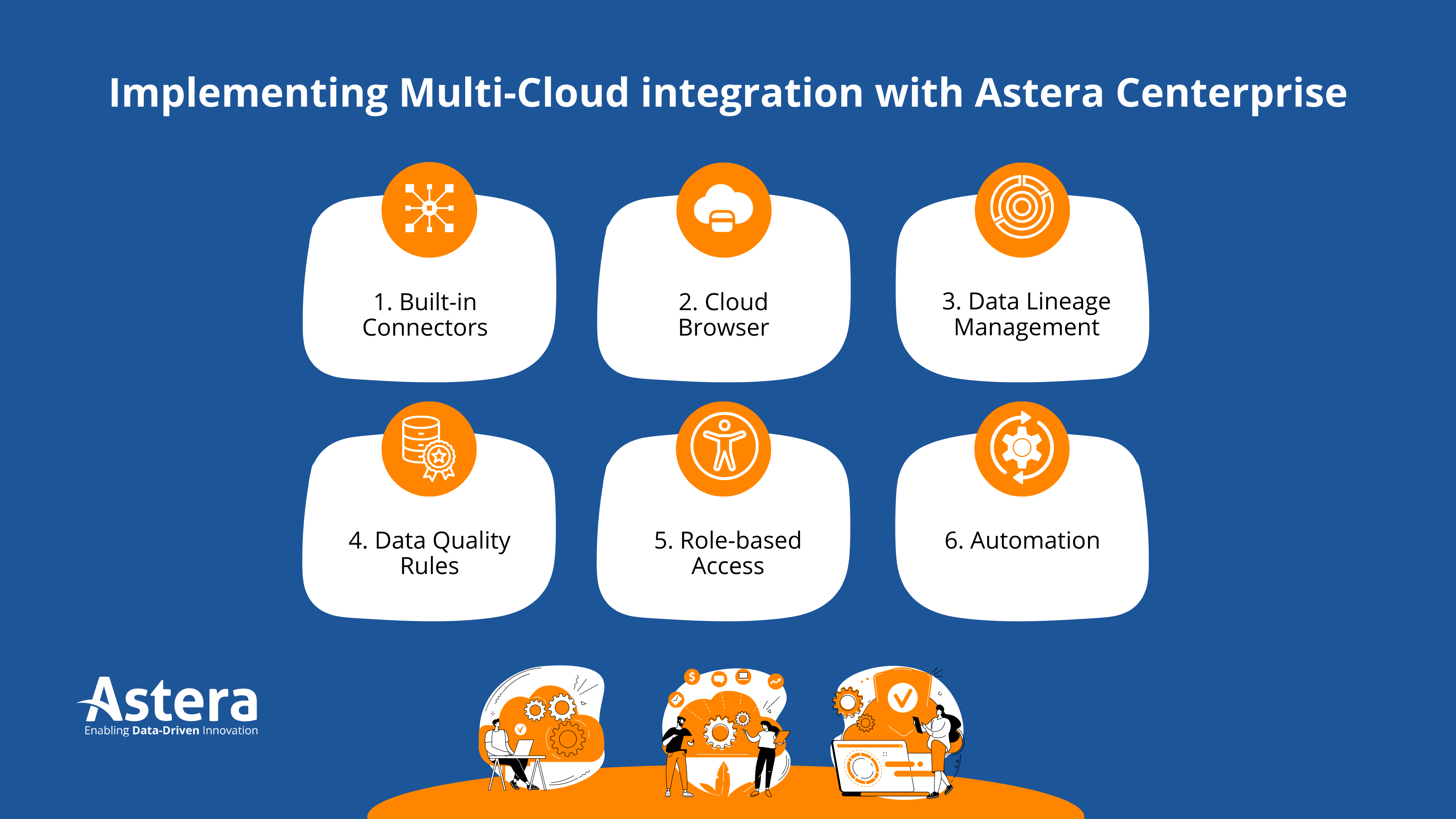
Multi-Cloud Integration: Benefits and Best Practices

Salesforce announced its strategic partnership with Amazon Web Services in 2016. It wasn’t long before the “#1 CRM provider “went ahead and partnered with Microsoft Azure in 2019 and then soon made a deal with Alibaba Cloud to extend its services in China. Salesforce is not an exception, as modern enterprises are heavily investing in a multi cloud architecture. In fact, as much as 92% of companies have adopted a multi-cloud strategy.
While multi cloud is a wise decision, businesses often run to into management and operational challenges. Fortunately, companies today have access to multi cloud integration solutions that make it easier to leverage the full potential of multi cloud environments and platforms.
If your business is slowly evolving into a multi cloud architecture or you are contemplating employing one, then it is essential to familiarize yourself with the dynamics of multi cloud integration. Let’s delve into the details.
Why Multi Cloud Strategy Makes Sense?

With the advancements in cloud native technology, a single cloud provider can easily fulfill all data requirements. Then, why should you opt for multiple vendors? The simple answer is: you wouldn’t want to bet everything on a single provider. Here’s why multi-cloud architecture makes sense:
Avoids Vendor Lock-in
When all your data and workloads are dependent on a single vendor, you have no choice but to continue the contract even when cheaper and better alternatives are available. A multi cloud deployment approach solves this problem. Using cloud services from more than one cloud vendor helps avoid vendor lock-in, so you can take advantage of the best available features and pricing across providers.
Increases Redundancy
Most cloud providers promise 99.9% availability, but even the leading cloud solution providers are susceptible to downtime. In October 2021, Azure Cloud went down for around six hours. In 2022, Google Cloud was disrupted for two hours, affecting Spotify, Discord, Snapchat, and several other applications. A multi-cloud architecture serves as a safety net in case of such outages, keeping your business up and running.
Enables Regional Availability
Another critical factor that warrants the usage of multiple clouds is regional availability. AWS has services in 25 geographic regions, while Azure is available in 60+ regions. Google Cloud has 27 regions, but it doesn’t have services in China. By employing multiple cloud services, you can easily extend your services to more regions.
Reduces Cost
By implementing multiple clouds, you can take advantage of the different pricing models. For example, you can store your data in one platform that offers low storage prices and utilize another cloud for computing requirements. However, it’s crucial that you identify and understand your business and cloud data objectives to realize the long-term cost benefits.
Maintains Privacy
Often businesses prefer to keep their workloads on a private cloud due to security concerns. However, the private cloud comes with its own limitations such as high maintenance costs and restricted infrastructure. With multi-cloud integration, you can take advantage of private cloud and public cloud. If you have sensitive data, you can keep it on a private cloud and use public cloud services for the rest of your data.
Multi Cloud Integration Best Practices

Data Interoperability
The success of a multi-cloud strategy hinges upon how seamlessly all your systems are integrated. Ideally, your systems should be able to speak to each other with a constant and seamless data exchange, and any changes in one system should reflect across all the systems. An increase in the number of cloud providers translates into a high amount of cloud APIs, interfaces, and a lack of standardization between vendors. Multi-cloud integration allows you to integrate your systems without coding, saving you time and ensuring that your data is always reliable.
Data Portability & Visibility
Data can easily get compromised when it’s on the move between systems, which is why many data privacy laws, such as GDPR and CCPA, emphasize data portability. To ensure compliance, you must protect your data integrity by enforcing strict security and access controls. Moreover, you should have complete data visibility to carry out a meaningful analysis.
Data Quality
Data quality is indirectly proportional to several data sources, and conventional methods of maintaining data quality usually don’t work in multi-cloud infrastructure because of high data volume. You need a meticulous data quality program that ensures data completeness and accuracy and confirms there are no inconsistencies across systems.
Implementing Multi Cloud integration with Astera Centerprise

To leverage the full potential of your multi-cloud architecture, you need to centralize the management of all cloud environments. A bird’s eye view of your ecosystem is essential to maintain access controls and data quality and to avoid having to deal with one-off configurations. That’s where Astera Centerprise, our multi-cloud integration tool, comes into the equation.
Astera Centerprise is a code-free data integration solution that allows you to connect multiple cloud platforms and create a unified view of your data. The enterprise-grade data management platform comes with numerous capabilities and features to help you streamline multi-cloud integration, including:
- Built-in connectors: Astera offers native connectivity to leading cloud storage services, including Snowflake, Salesforce, Amazon S3, Microsoft Azure and Google Cloud etc. You can simply drag and drop the connectors in the visual browser, enter credentials, and map your pipelines to ensure seamless data exchange between multiple cloud providers.
- Cloud browser: Astera simplifies accessibility to cloud platforms. You can use the cloud browser to easily download and upload data on the cloud. It also gives you complete and easy visibility into data stored on cloud platforms.
- Data lineage management: Astera’s data lineage feature allows you to maintain a complete record of your data origins and what happens to it while it flows from data sources to consumption.
- Data quality rules: Using Astera’s data quality and profiling tool, you can apply one or more conditions and validation checks to guarantee the accuracy, reliability, and validity of your data assets.
- Role-based access: Astera provide role-based access where a Super admin can assign three types of roles to users, depending on the nature of their job. With these security measures, you can add, edit, or restrict access to data resources as per your organizational policy.
- Automation: Astera’s workflow automation and job scheduling features help you tackle data latency issues associated with multi-cloud integration.
Do you want to leverage the true potential of your multi-cloud architecture? Download Astera Centerprise’s 14-day free trial today and effortlessly unify your enterprise data.





